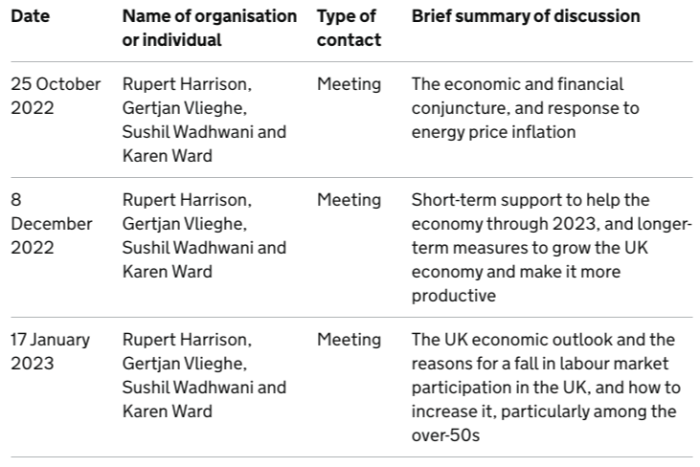
Unlock the Editor’s Digest for free
Roula Khalaf, Editor of the FT, selects her favourite stories in this weekly newsletter.
One of the tragedies of journalism is all the reporting that, for one reason or another, falls down the cracks and disappears. Blogging isn’t proper journalism, however, so we get to show you the cracks.
Here are two fairly unimportant things that happened alongside the UK’s Autumn Statement, delivered by Chancellor Jeremy Hunt on Wednesday:
— Hunt jettisoned the Economic Advisory Council that was set up in the wake of the UK markets crisis last Autumn
— The Department for Levelling Up, Housing & Communities put out a policy paper about speeding up infrastructure delivery in the United Kingdom
For reasons unknown even to us, Alphaville looked at both of those things, and here are things we found out to do with both of those things:
Council cancelled
The Economic Advisory Council was set up by Hunt in October last year, in the wake of the LDI crisis that buried Liz Truss. We wrote about it here.
Its terms of reference said it would meet “as required” and “act as a consultative forum for the government to be advised on UK and international economics and financial markets”.
The initial list of members was:
-
Rupert Harrison, BlackRock*
-
Gertjan Vlieghe, Element Capital
-
Sushil Wadhwani, PGIM Wadhwani
-
Karen Ward, JPMorgan Asset Management
(*Harrison stepped down from BlackRock over the summer and is now the Conservative candidate for Bicester and Woodstock, a new constituency).
This council met three times:

In April, the EAC was expanded to include three new members:
— Andy Haldane, Royal Society and Arts (and, of course, formerly Bank of England)
— Anna Valero, London School of Economics
— Sir Jon Symonds, chair of GSK
Hunt, who has shown few tangible signs that he particularly cares about economic growth, said:
Economic growth is essential to our long-term prospects and in the face of global headwinds, this council plays a critical role in helping our economy meet these challenges.
Despite this “critical role”, the expanded council met only once, on May 18, according to two people with knowledge of the situation.
One former member, who spoke on the condition of anonymity, said: “I think the council played an important role in restoring confidence and helping to guide macro policy in the wake of the mini-Budget crisis, but a year on it seems natural to wind it down.”
Another said it was “probably time to move on”. We agree.
Big plans
DLUHC’s paper “Getting Great Britain building again: Speeding up infrastructure delivery”, included this section:
The volume of documentation slows decision-making and reduces transparency. As projects become more complex, and seek to mitigate uncertainty, the paperwork they generate has increased. Some applications have generated more than 90,000 pages of documentation on the Planning Inspectorate website. To put that into context, if a planning officer spent every minute of a 37.5 hour working week reading a 90,000 page application, it would take roughly 395 working days to read it all.
We’re certain the UK’s planning system could use improvements, but this is obviously quite silly because:
1) The majority of those 90,000 pages are not likely to be text
2) Any project on this scale will justifiably demand the attention and resources of more than one planning officer
Anyway, the problem here is that it’s easy to say something is too big, but often very hard to figure out how to make it smaller.
Still, we wanted to check the basics — is this claim even true? After a bit of back-and-forth with the Planning Inspectorate press office (who initially gave us a vibes-based answer before giving a quantified answer) we now have details on the biggest planning application by pages (indeed, over 90,000 pages of them) that was found from a metadata analysis.
So, uh, let’s play a game?

Unfortunately, the Planning Inspectorate weren’t able to tell us the name and size of the next-biggest project (in order to justify the claim that multiple “applications have generated more than 90,000 pages”), so as a fact check this process completely failed. Oh well.